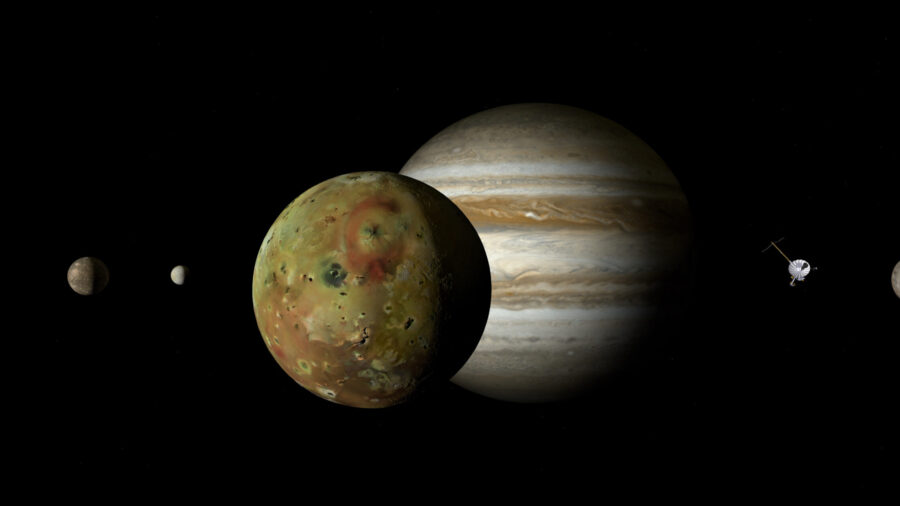Scientists Think Jupiter Has Eaten Many Smaller Planets
Wow, leave some for Galactus!
This article is more than 2 years old

Here’s an interesting tidbit to drop the next time you find yourself short on small talk: Jupiter may have earned the title of being the biggest planet in our solar system by eating up smaller planets. A newly-published study in Astronomy and Astrophysics is raising the possibility that inside the giant gas planet are a number of tiny baby planets, pulled in by Jupiter’s massive gravity and essentially consumed by it. Sixteen scientists authored the study, and upon studying the contents of the planet, past the outer cloudy gas layer, they found a number of heavy elements, which leads them to believe they are actually former smaller planets Jupiter has essentially “eaten,” according to ComicBook.com.
The study text itself will go over the heads of most of us, but LiveScience.com breaks down how scientists arrived at the Jupiter theory, despite never actually penetrating the outer layer to see what makes up the core. Thanks to NASA’s Juno space probe, scientists were able to collect gravitational data about the planet’s core, essentially looking past the upper clouds. “It is very unique data that we can only get with a spacecraft orbiting around the planet,” lead researcher Yamila Miguel told LiveScience. Within Jupiter’s massive body, they found rocky material and heavy elements at the core. The chemical composition of this material suggests it came from outside bodies, baby planets scientists call “planetesimals.”
The idea of foreign objects in space making contact with a planet is not uncommon – our moon is filled with its signature craters thanks to smaller meteors hitting it over millions of years. In the case of Jupiter, however, the situation is different, as the baby planets were actually pulled into Jupiter, rather than colliding with it. Thanks to enormous size – it’s 11 times wider than the Earth, but you could also fit 1,300 Earths inside of it – Jupiter has a massive gravitational pull. Since its inception, this pull has brought in those smaller planets and added them to its core, making its size even bigger with every new addition. It’s not known how big Jupiter was initially, but today, it’s the biggest in the Milky Way, by far.
The “planet eater” theory has long been hypothesized by scientists, although some had theorized that Jupiter grew to its current size thanks to billions of “space pebbles” hitting its atmosphere. The new study, however, basically puts the argument to rest, saying the evidence proves the “planet eater” theory once and for all. This phenomenon was only possible because Jupiter is a gas planet, as a solid planet would have reacted very differently to pulling in smaller planets.
Data from the Juno probe, which arrived at Jupiter on July 4, 2016, was collected by having the probe orbit the planet for 53 days, just above the outer cloud layer and into the edge of its magnetosphere. It is actually still collecting data, and is expected to do so until 2025, giving us a better look at the planet, its’ rings, and what scientists believe are as many as 79 moons. This data was combined with data from the Galileo probe, which arrived at Jupiter in 1995, to formulate the presence of the heavy elements which made up the baby planets, now within Jupiter’s core. If you want to get a good look at Jupiter in the early morning sky, this month will provide a unique opportunity. For the first time in 18 years, five planets (Mercury, Venus, Mars, Jupiter and Saturn) will be sequentially aligned and visible around dawn throughout this month. Just look from the East to the South, just above the horizon, to see the planets.













